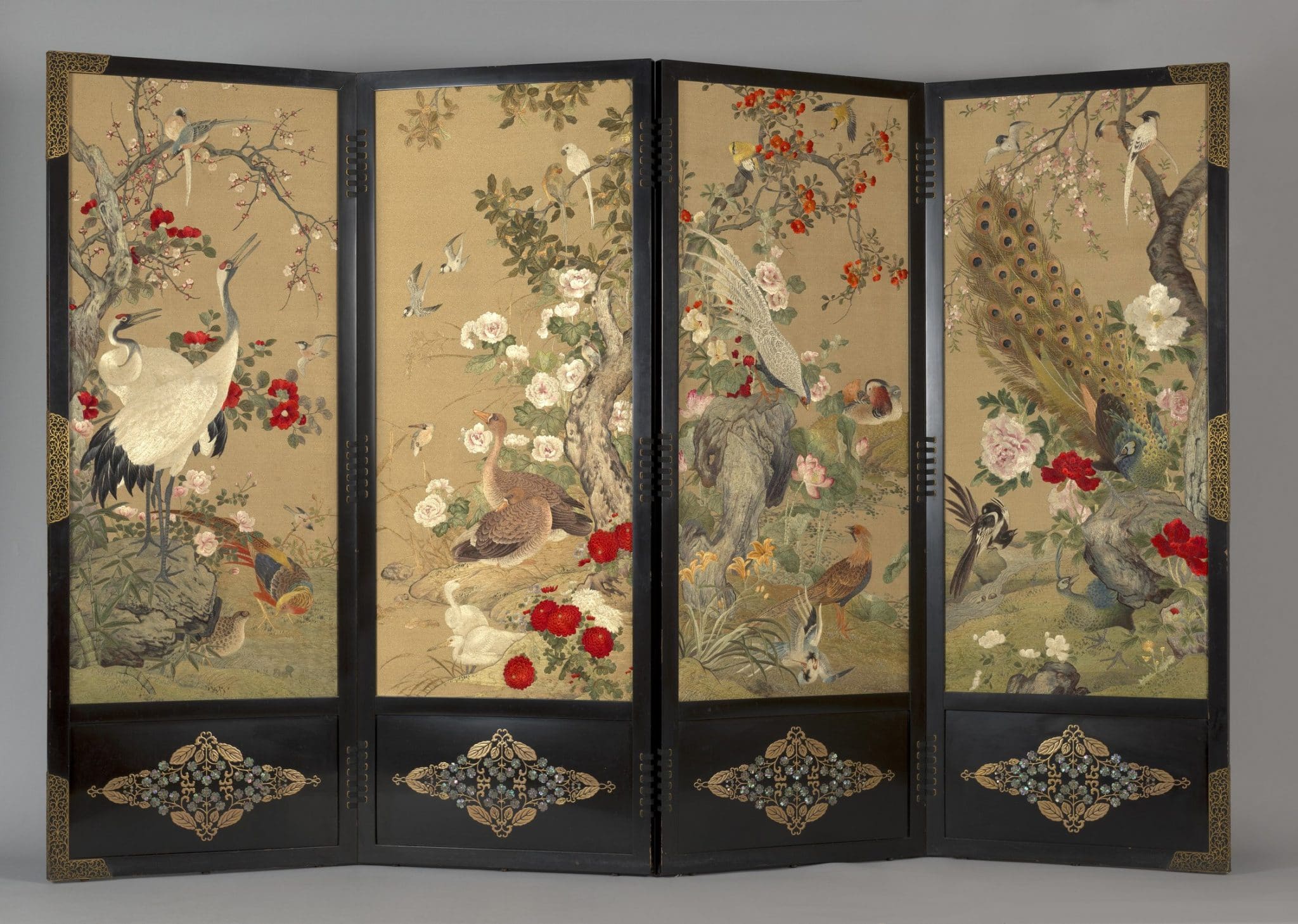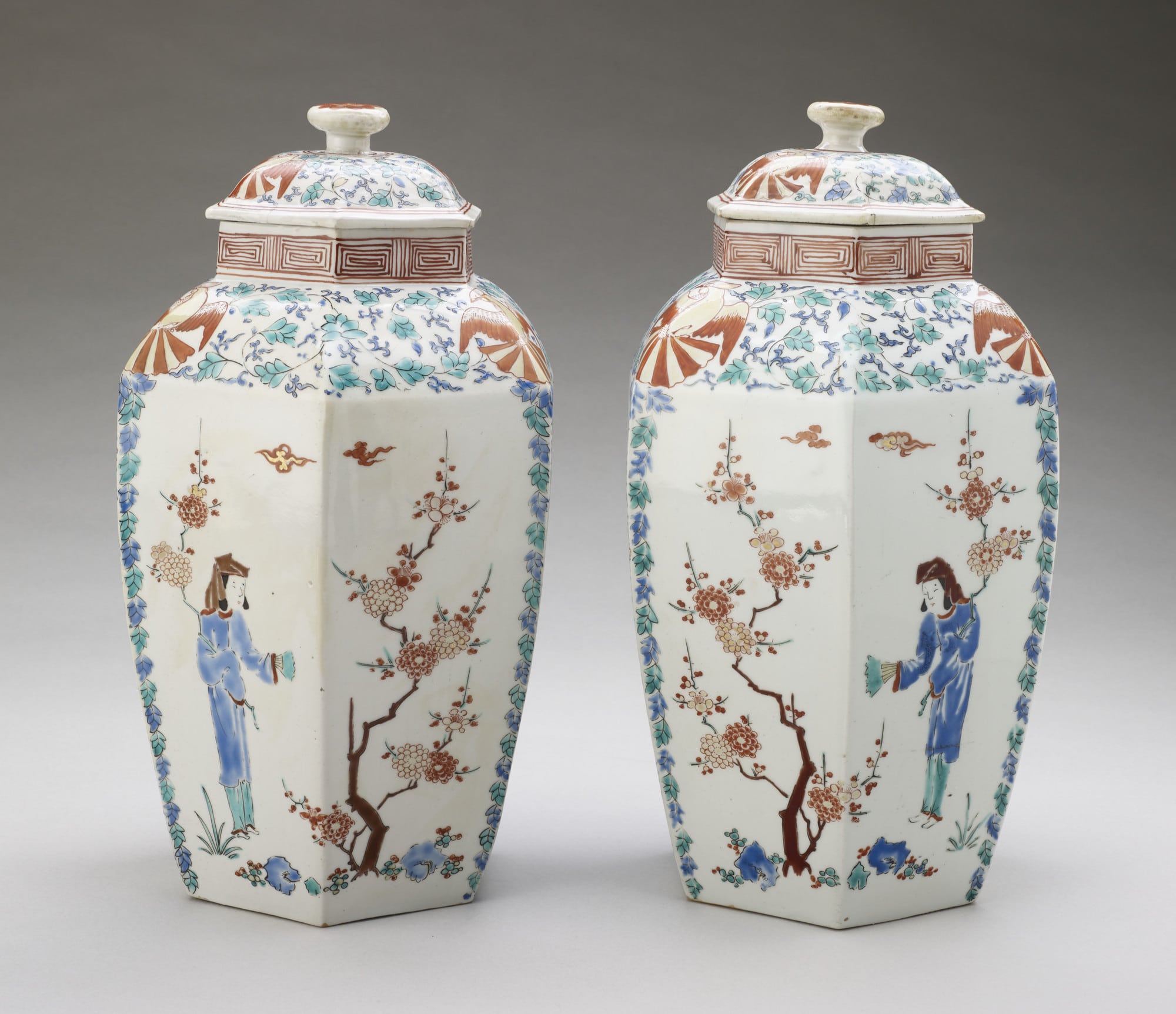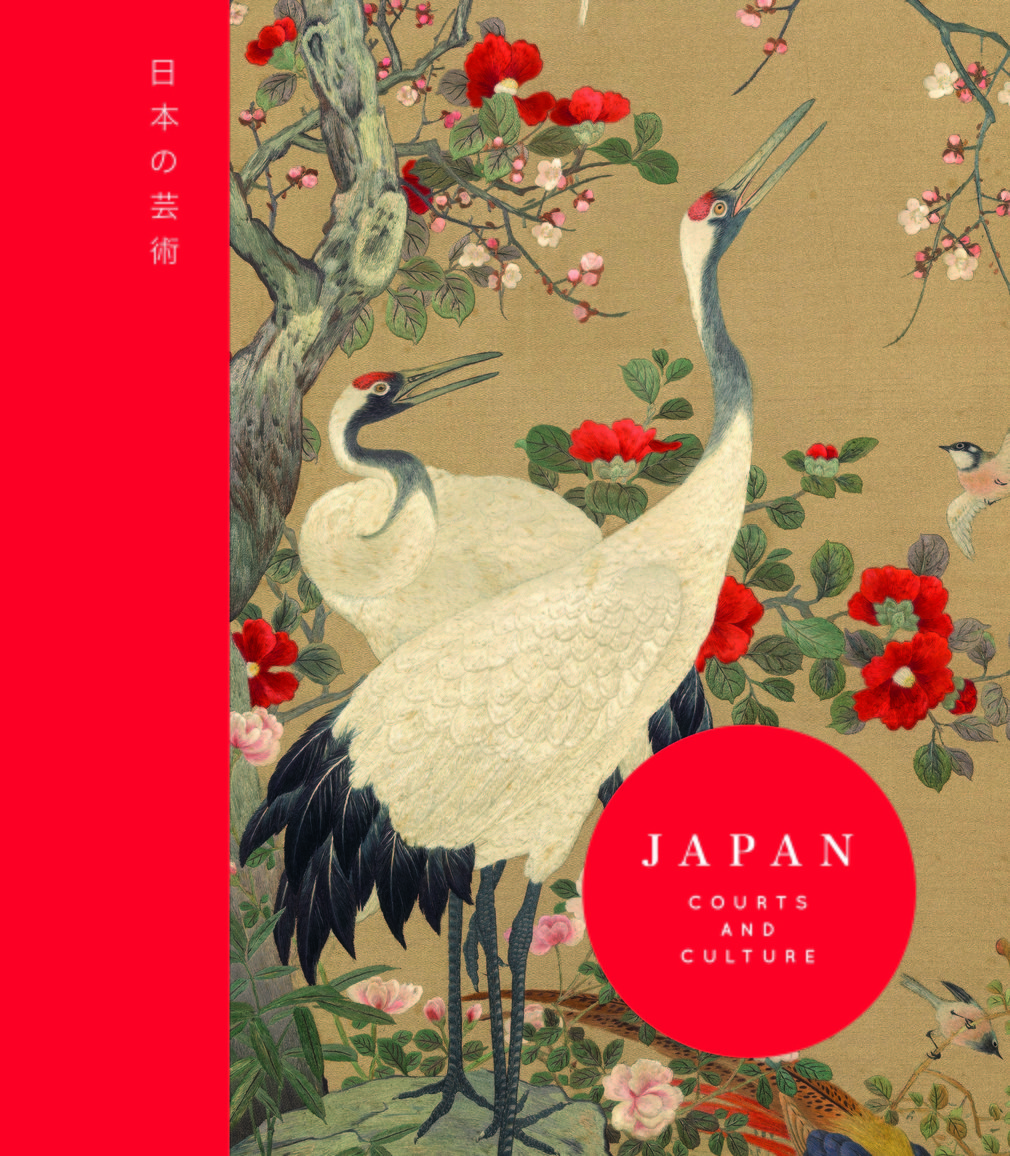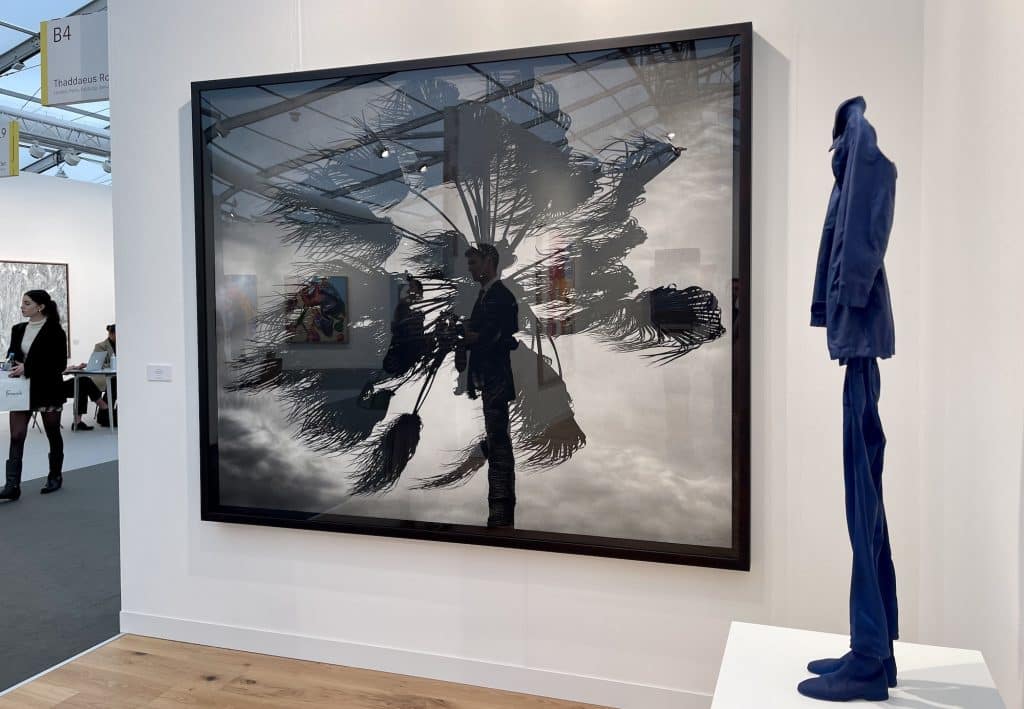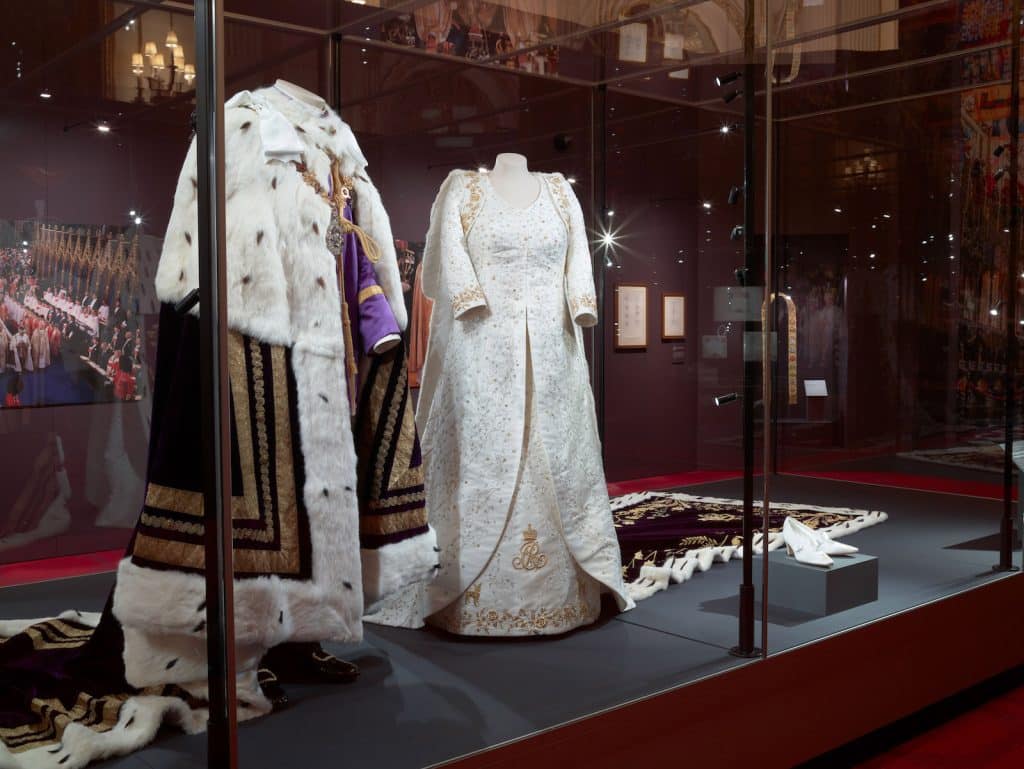Japan: Courts And Culture edited by Rachel Peat, is an exquisite book that tells the story of 400 years of British Royal contact with Japan. It acts as a preview of the forthcoming Queen’s Gallery exhibition of the same name. The book explores how decorative arts were central both to direct diplomatic relations and to indirect cultural connection. It’s major theme revolves around royal tours which took place in the late nineteenth and early twentieth centuries, and the personal gift exchanges which occurred, helping to foster relations between Britain and Japan. The first member of the British royal family to visit Japan was Queen Victoria’s son, Prince Alfred, in fact he was the first royal foreigner of any nationality to be invited to the modern Imperial Court.
Featuring new research on previously unpublished works, including lacquer, armour, embroidery and metalwork, this elegant Japan: Courts And Culture book showcases the advanced level of craftsmanship of these beautiful objects, and the local materials, techniques and tradition behind them, during three centuries of diplomatic, artistic, and cultural exchange. Featured are rare pieces of porcelain and lacquer, samurai armour, embroidered screens and diplomatic gifts from the reigns of James I to Her Majesty The Queen.
Pair of hexagonal jars and covers 1670-90. King’s Private Dressing Room, Hampton Court Palace. Royal Collection Trust/© Her Majesty Queen Elizabeth II 2020.
Above, a pair of hexagonal Kakiemon-style porcelain jars and covers. Each with six gently curved sides tapering to the foot.
Painted in rich blue, green, yellow, red, brown and black. One shows two blue cranes; one swooping down and the other standing under an arching pine tree beside a blue rock and a flowering camellia. In a second panel, a woman in a blue coat admires a flowering prunus, holding a fan and a spray over her shoulder. In the third, a yellow-breasted bird perches on a stem of bamboo and another with blue wings rises to meet it.
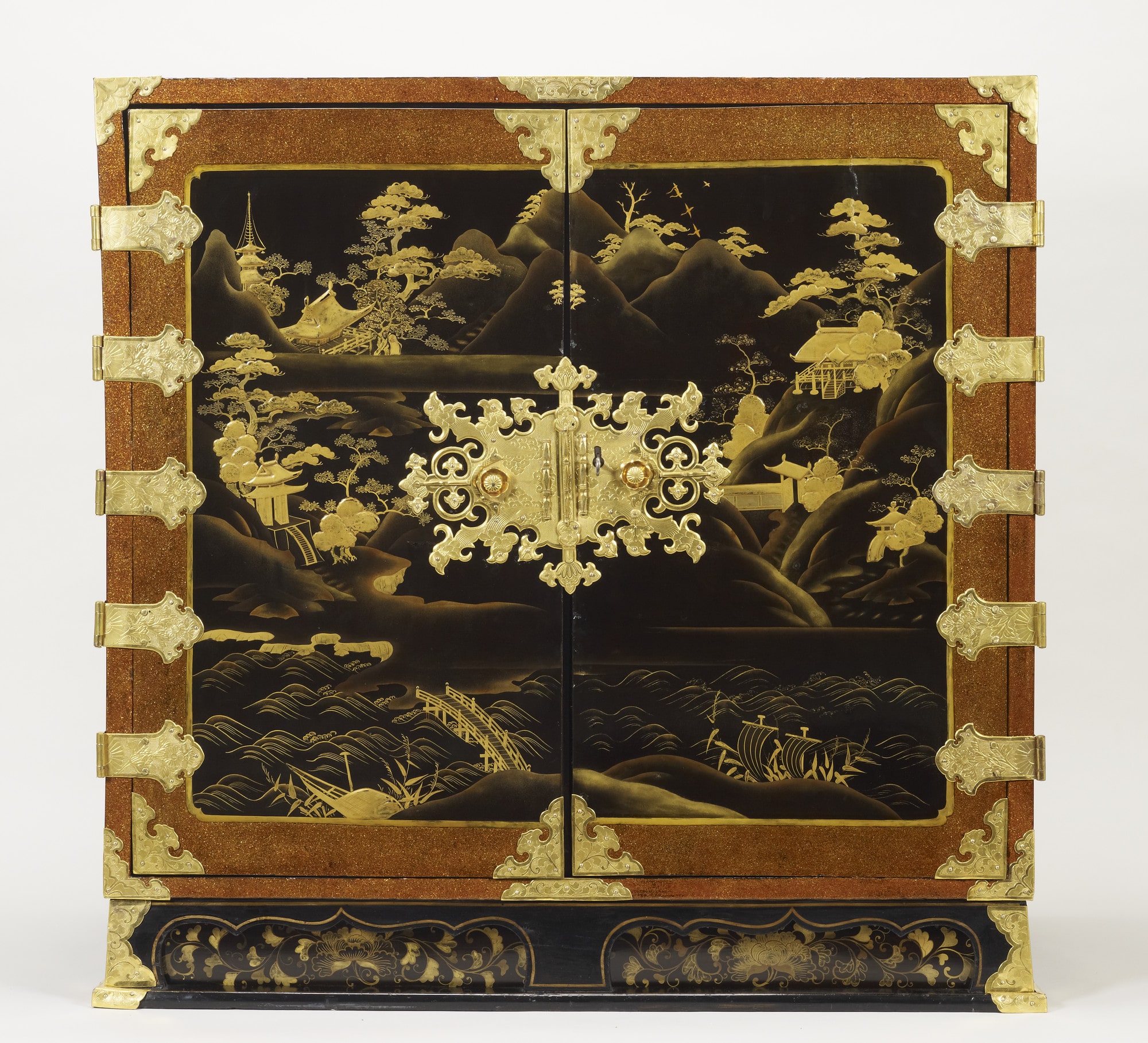
During the early 18th century lacquer was an important and luxurious element of furnishing a state apartment: it was usually reserved for the most important of spaces. On account of its expense, fragility and exotic quality it signified luxury and high status. The above cabinet is recorded in a watercolour of the King’s Writing Closet at Hampton Court Palace, c.1819, placed there possibly by either George I or George II, who embarked on the completion of Mary II’s apartments, left unfinished after her death in 1694. This lacquer cabinet was certainly brought from Japan, in the cargo of an East Indiaman ship, either as part of the British East India Company, or traded through the Dutch East India Company.
Below, the striking armour was sent to James I of England by Tokugawa Hidetada, third son of Tokugawa Ieyasu, who ruled as the second shōgun of the Tokugawa dynasty from 1605 to 1623. The armour is of the body-wrapped (dōmaru) type, which hinges around the body and fastens on the right. The ‘pumpkin-shaped’ helmet (akodanari kabuto) is signed by Iwai Yozaemon, one of the main armourers to the ruling Tokugawa family. Much of the armour is laced in red and blue silk in a chequerboard pattern. The lamellae (kozane) are individual pieces of iron lacquered and laced together – a technique known as hon-kozane (‘true’ kozane), which creates a more flexible armour.
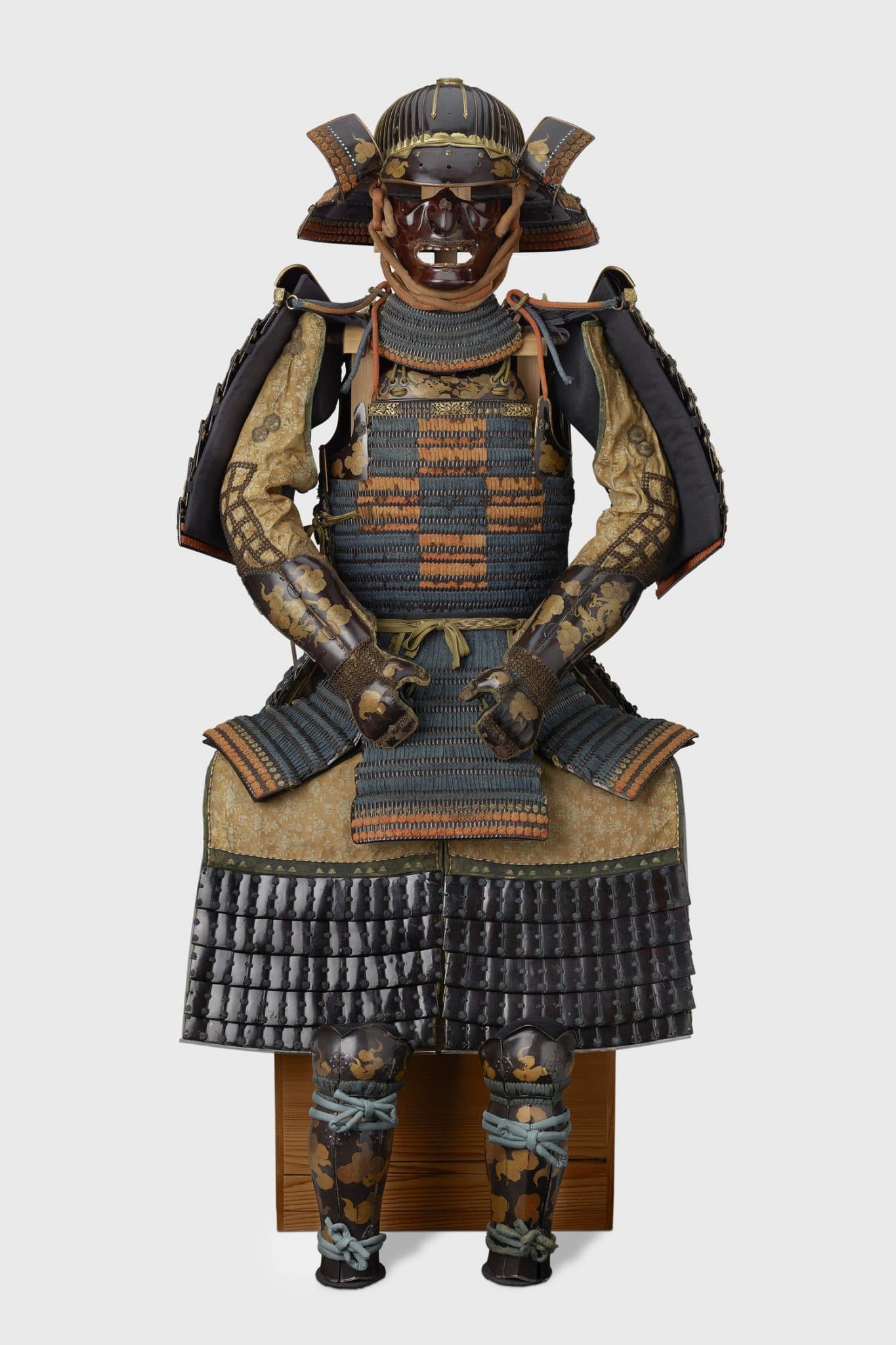
This fan was a gift from Princess Chichibu (1909-95) to either Queen Mary or Queen Elizabeth in 1937. This ivory fan (zōge ōgi) is of brisé design – that is, with solid sticks of ivory joined together with a ribbon, rather than with a folded leaf attached to the sticks. Both the fan and its box are decorated in high-relief gold lacquer (takamakie) of different shades. The lacquer work on the fan is abundant, filling both guard sticks, and the design across the recto is repeated in reverse on the back. It is typical of the high-quality export wares created in Japan towards the end of the nineteenth century. Chrysanthemums, associated with the Japanese imperial family and depicted in their mon, appear on both the fan and its box. As befits a gift from a member of the Japanese imperial family, the quality of the lacquer work is extremely high.
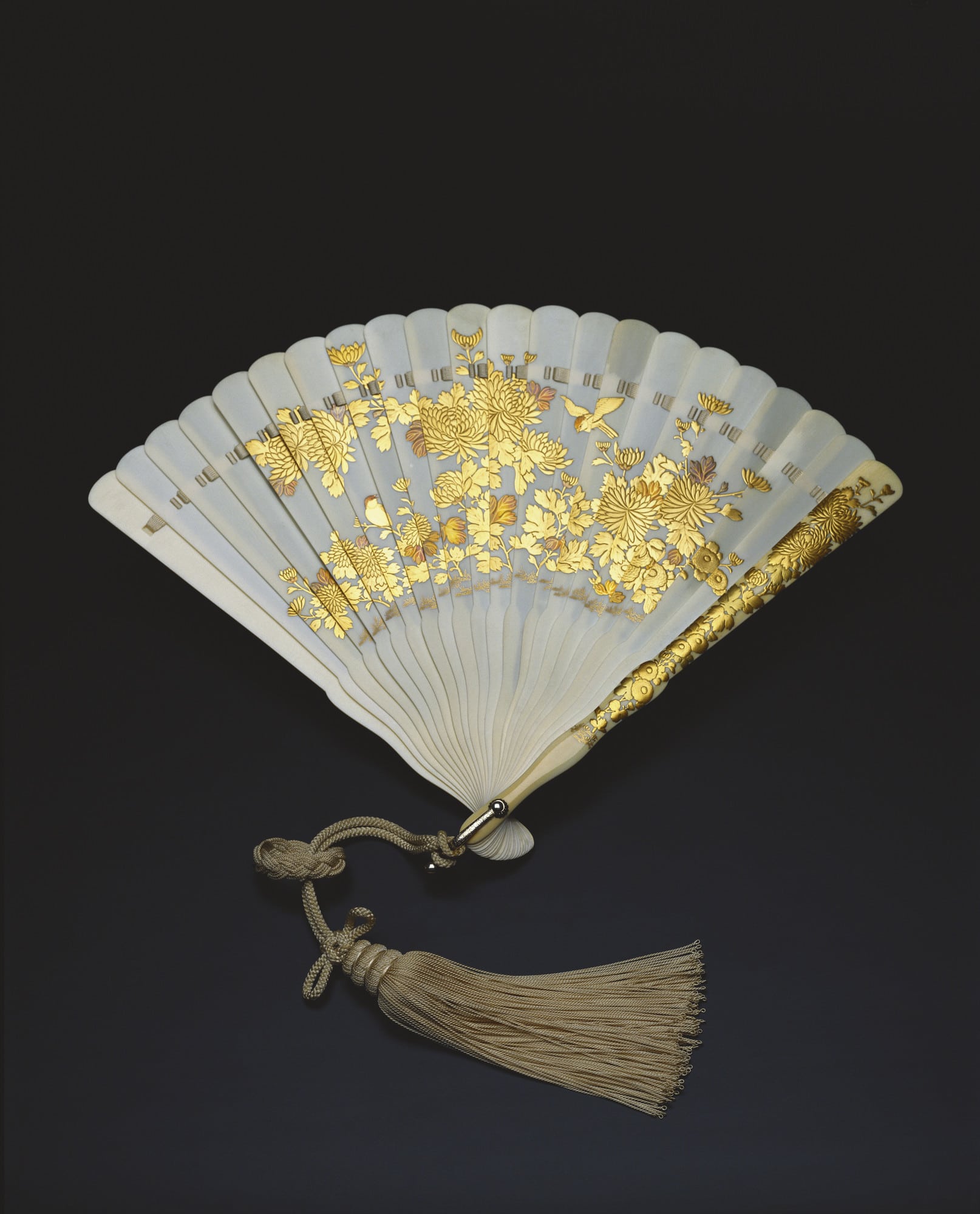
Usagi (rabbits or hares) are often associated with the Year of the Rabbit. They appear frequently in netsuke and porcelain, as well as in screen paintings, prints and textiles. Mythology surrounding the hare was adopted from China, where the animal was associated with the moon and thought to assist in preparing the elixir of immortality. The theme of longevity is reinforced here by the reishi (fungi) growing on the rocks; these fungi are said to proliferate on Mount Hōrai, the mystical land of the Immortals. The colourful geometric and floral designs give these hares a playful, humorous feel. These patterns were charmingly described as ‘harlequin patches’ when the pair was inventoried at the Royal Pavilion, Brighton in 1829. The decorative pieces serve as pastille burners, and the incense when burnt diffuses through holes in the brown glazed rockwork. Originally acquired by George IV for Brighton on 5 April 1818, the pieces were later sent to Buckingham Palace, where by 1911 Queen Mary displayed them prominently on top of a Chinese cabinet in the ‘Lacque Room’ in her private apartments. Queen Elizabeth The Queen Mother (1900 –2002) subsequently used them to furnish her rooms at Clarence House.
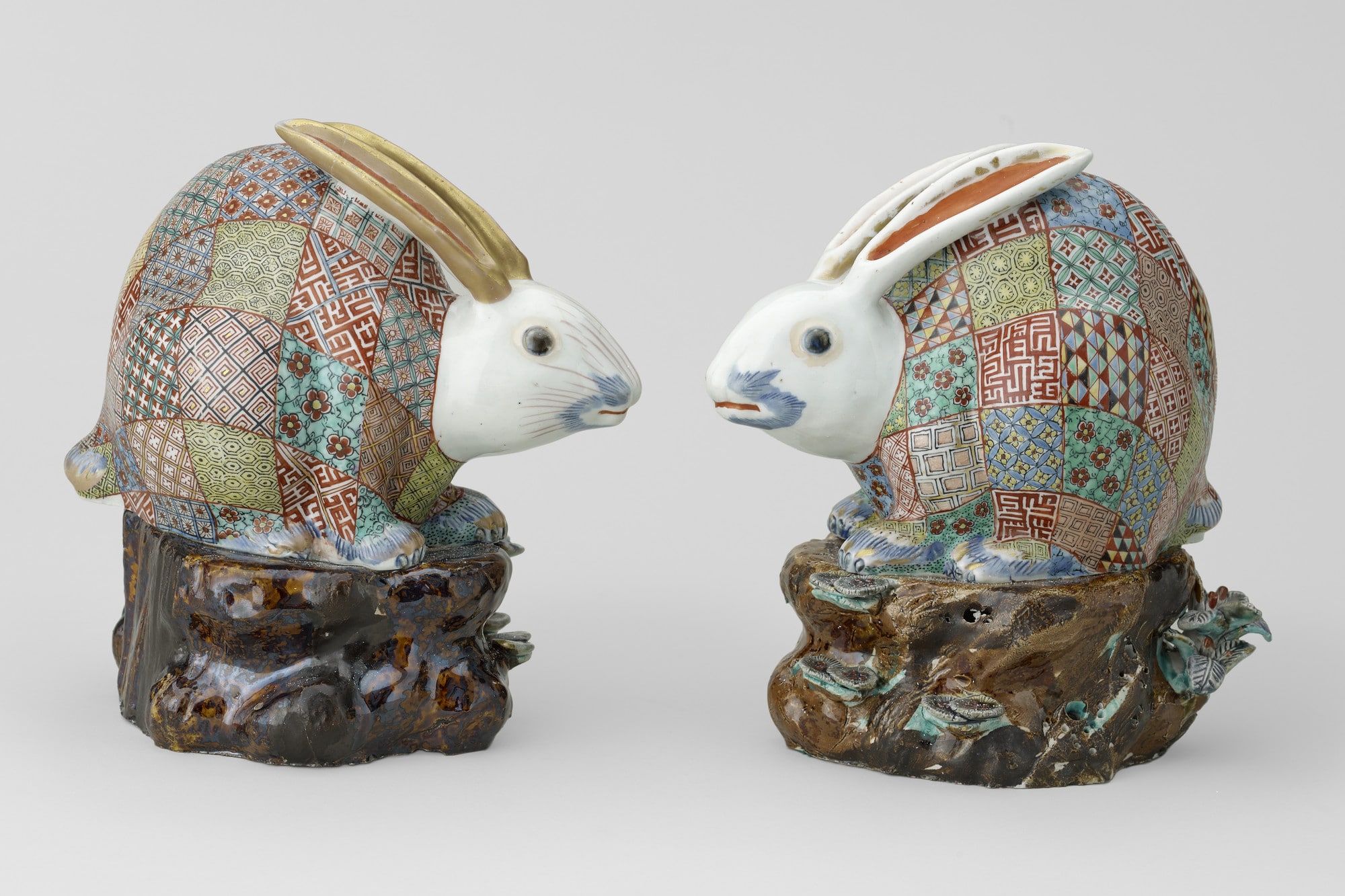
Makino Yoshio, known as Yoshio Markino, was a Japanese artist and writer born in Koromo (Toyota City). In arrived in London in 1897, instantly falling in love with the city. He spent hours walking the streets, fascinated by the effect of mist and fog on the appearance of buildings, especially under gaslight which he would capture in watercolour. His greatest success was the publication of The Colour of London by W.J. Loftie in 1907, which contained reproductions of 48 of his watercolours. The print below shows the ghostly outline of Buckingham Palace at dusk, and demonstrates the way in which Markino’s work combined his western artistic training with his Japanese heritage. The scene is presented with the simplicity of a ukiyo-e print, but the colours are muted and the winding path through Green Park provides a strong sense of perspective.
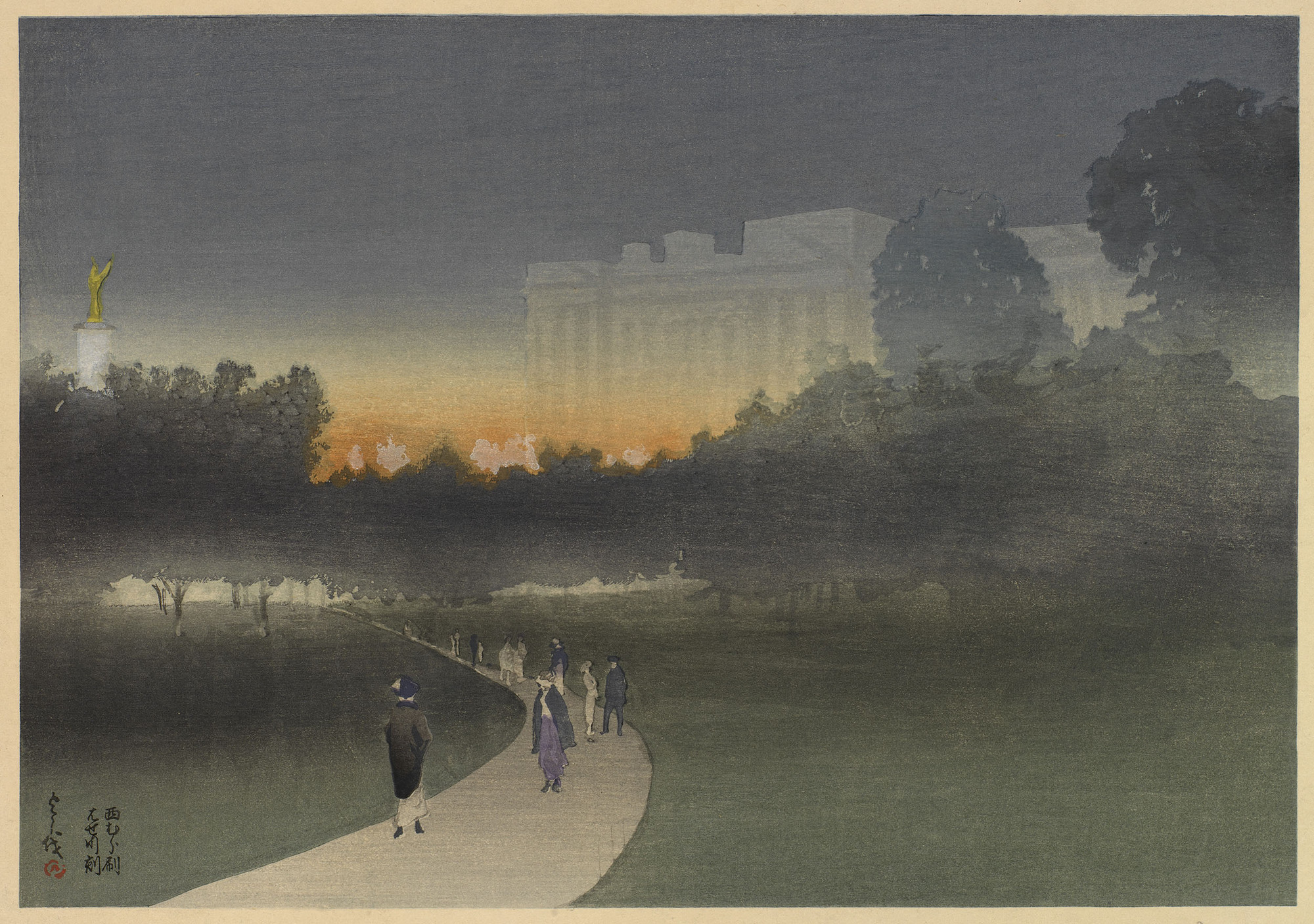
The Emperor Shōwa sent this rare and refined piece to Her Majesty The Queen as a Coronation gift in 1953 – just one year after Japanese-British relations had been normalised by the Treaty of San Francisco, signed in 1951 and brought into force in 1952. The presentation of this first post-war diplomatic gift was therefore of great significance, and the Imperial Household evidently sought a piece of the highest calibre. This exceptional box is the work of Shirayama Shōsai, one of the most prestigious lacquerers of the Meiji and Taishō eras. Today, fewer than 70 examples of his work are known in Japan, Europe and the United States.
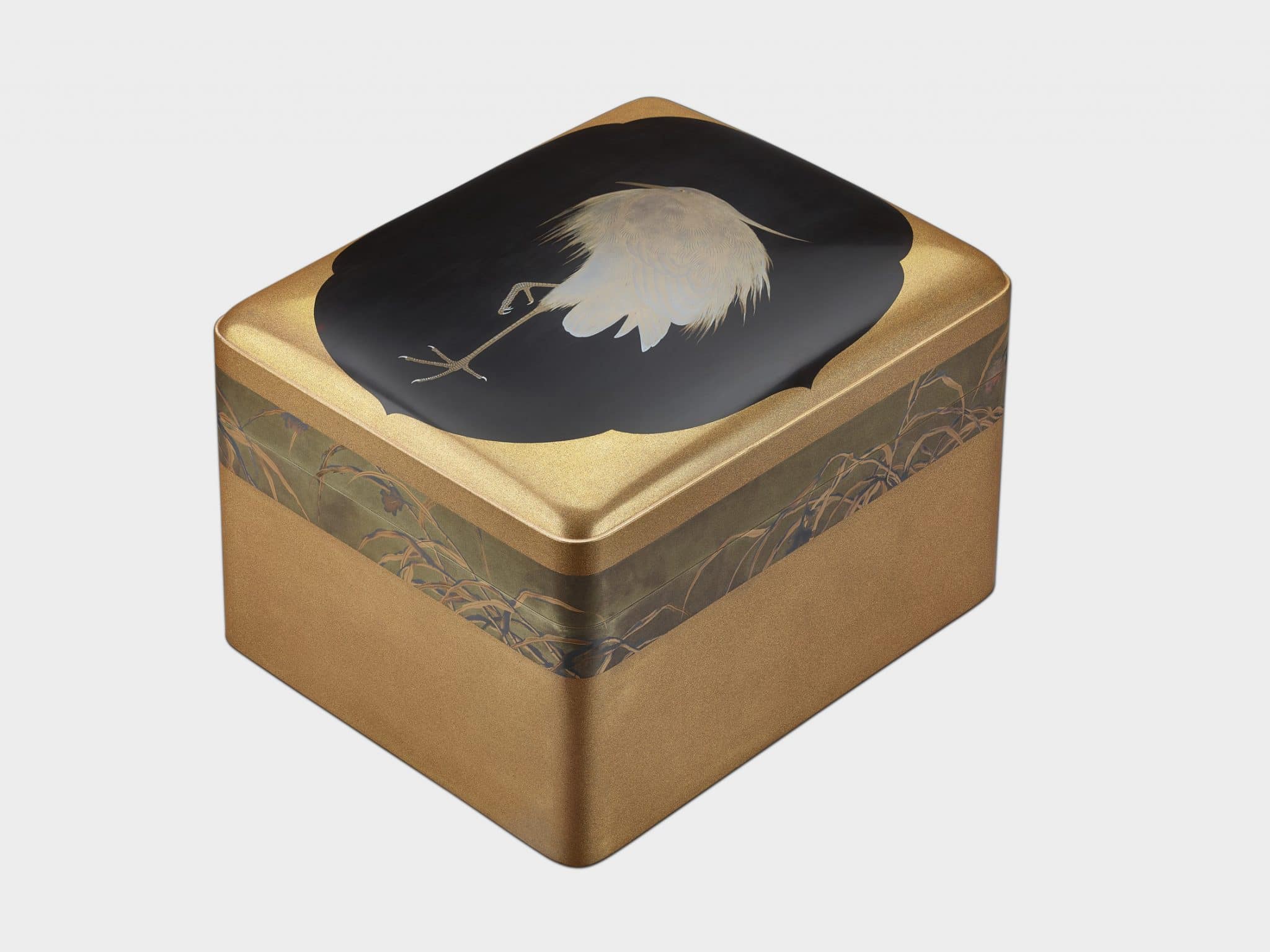
Japan: Courts And Culture consists of four narrative chapters which outline British royal interaction with Japan using prints and photographs and well as previously unpublished material from the Royal Archives. Readers are sure to experience the same delight as Prince George of Wales during his visit to Tokyo in 1881. He discovered that the ‘the main characteristic of all Japanese work is its conscientious perfection of detail in every particular, in that which is hidden as well as in that which is exposed to the eye.’
Japan: Courts And Culture is published by Royal Collection Trust. For further information on the book and corresponding exhibition, please visit here.
To purchase a copy of Japan: Courts And Culture please visit here
For our curated recommendations of books on Art, Culture, Design and Architecture visit the CELLOPHANELAND* bookstore




